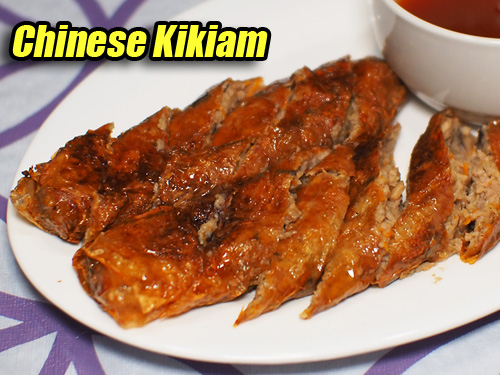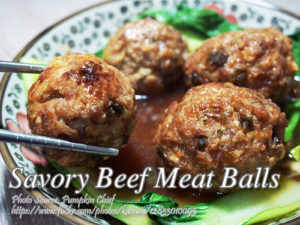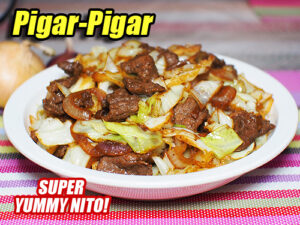Chinese kikiam is one of most favorite food of Pinoys and also Chinoys. You can’t miss this dish specially if you will visit Chinatown in Binondo, which is known as the oldest Chinatown in the world. But don’t be confused with the kikiam sold by street vendors that sell also fish balls, kwek kwek or kikiam. Those small kikiam are not Chinese kikiam and they are mostly made out of flour and some fish meat.
Chinese Kikiam: A Culinary Delight Rooted in Tradition
Chinese Kikiam is a beloved dish among Filipinos and Chinese-Filipinos alike. This savory treat holds a special place in the hearts and taste buds of many, especially in places like Binondo, Manila’s famous Chinatown. Not to be confused with the street vendor version sold alongside fish balls and kwek kwek, authentic kikiam is a flavorful, meat-filled delicacy steeped in tradition.
A Taste of History: The Roots of Chinese Kikiam
The origins of this food can be traced back to the culinary traditions of the Chinese immigrants who settled in the Philippines. These early settlers brought with them a variety of dishes that have since become integral parts of Filipino cuisine. Binondo, the oldest Chinatown in the world, is a testament to this rich cultural exchange. It’s a place where the flavors of China have melded seamlessly with Filipino culinary practices, creating unique dishes like Kikiam. This dish is a symbol of the enduring bond between these two cultures, showcasing a blend of ingredients and cooking techniques that have been passed down through generations.
The Ingredients That Make This Kikiam Special
Chinese kikiam is distinguished by its rich, savory filling. Ground pork serves as the primary base, providing a hearty texture. The addition of Shiitake mushrooms adds an earthy depth, while grated carrot and turnip contribute a subtle sweetness and crunch. Onion and shrimps enhance the flavor profile, creating a well-balanced mixture. The blend of oyster sauce and soy sauce introduces a savory umami note, complemented by a touch of sugar for balance. Five spice powder, a quintessential Chinese seasoning, infuses the mixture with warm, aromatic flavors, while white pepper and cornstarch bind the ingredients together, ensuring a cohesive filling.
Crafting the Perfect Kikiam: Step-by-Step
Creating it involves a meticulous process that begins with preparing the filling. In a mixing bowl, the ground pork is combined with finely chopped Shiitake mushrooms, grated carrot, grated turnip, onion, and shrimps. To this mixture, oyster sauce, soy sauce, sugar, five spice powder, white pepper, and cornstarch are added. Mixing these ingredients thoroughly, preferably by hand, ensures that the flavors meld together perfectly.
Next comes the wrapping process, which is essential for the distinctive shape and texture of Kikiam. A piece of bean curd skin (tawpe) is laid on a flat surface, and a portion of the meat mixture is placed in the center. The mixture is shaped into a log, and the sides of the tawpe are folded over it. A cornstarch slurry is brushed on the edges to seal the wrap, ensuring that the filling remains intact during cooking.
The Art of Cooking: Steaming and Frying
Once wrapped, the Kikiam logs are steamed for about 30 minutes. This steaming process not only cooks the filling but also helps the flavors to meld and develop further. After steaming, the Kikiam is allowed to cool, which is a crucial step to ensure the texture is firm enough for frying.
Frying the Kikiam to a golden brown perfection adds a delightful crispness to the exterior, contrasting beautifully with the savory filling. This final cooking step transforms the steamed Kikiam into a delectable treat that’s ready to be enjoyed.
Serving Suggestions: The Perfect Accompaniments
It is typically served sliced, allowing the intricate filling to be showcased in each piece. A dipping sauce, often made by combining cornstarch, sugar, soy sauce, water, and a touch of ketchup, is prepared to accompany the Kikiam. This sauce, cooked until thickened, enhances the flavor of the dish, adding a sweet and savory glaze that complements the meaty filling.
Chinese Kikiam vs. Street Vendor Kikiam
It’s important to differentiate between authentic kikiam and the versions commonly found at street food stalls. Street vendor Kikiam, often sold alongside fish balls and kwek kwek, is usually made from a mix of flour and fish meat, resulting in a product that is quite different from the traditional meat-filled Kikiam. While both versions have their own appeal, true kikiam is a testament to culinary craftsmanship and heritage, offering a richer and more satisfying flavor experience.
A Culinary Tradition Worth Celebrating
Chinese Kikiam is more than just a dish; it’s a celebration of cultural heritage and culinary tradition. Each bite tells a story of the Chinese influence on Filipino cuisine, reflecting a blend of flavors and techniques that have been cherished and preserved over the years. Whether enjoyed as a snack or part of a meal, it continues to be a favorite among those who appreciate the rich tapestry of flavors that define Filipino-Chinese cuisine. So next time you visit Binondo or prepare this dish at home, take a moment to savor not just the taste, but the history and tradition that make this kikiam truly special.
How to Make Chinese Kikiam
Ingredients
- 1 kilo ground pork
- 3/4 cup Shiitake mushrooms chopped
- 3/4 cup grated carrot
- 3/4 cup grated turnip
- 1 pc onion minced
- 200 grams shrimps peeled and minced
- 1/2 cup cornstarch
- 4 Tbsp. oyster sauce
- 4 Tbsp. soy sauce
- 1/2 Tbsp. five spice powder
- 1 tsp. white pepper
- 2 Tbsp. sugar
- bean curd skin tawpe
Instructions
How to Make Chinese Kikiam
- In a mixing bowl, combine ground pork, Shiitake mushrooms, grated carrot, grated turnip, onion, shrimps, oyster sauce, soy sauce, sugar, five spice powder, white pepper and cornstarch.
- Mix all the ingredients until well combined. You can use your bare hands to mix the ingredients thoroughly. After mixing, set aside.
- Lay a piece of bean curd skin (tawpe) in a clean flat surface. Put 3 to 4 tablespoons of the meat mixture in the center of the tawpe.
- Shape the meat mixture into log shape and fold the sides of the tawpe.
- Brush some cornstarch slurry on the other end of the tawpe then roll it to wrap the mixture then seal the edges.
- Put the kikiam in a steamer then steam for 30 minutes. When done, let it cool.
- Fry the kikiam in a frying pan until golden brown. Remove from pan and slice before serving. Serve with kikiam sauce.
- To make kikiam sauce" combine cornstarch, sugar, soy sauce, water and a little ketchup. Stir until the cornstarch is dissolved. Then cook until the sauce is thick.
Video
Notes
Cooking Tips of Chinese Kikiam:
Tip 1: Ensuring a Well-Balanced Filling To achieve a flavorful and well-balanced filling for your kikiam, finely chop the Shiitake mushrooms and grate the carrot and turnip. This ensures an even distribution of flavors and textures throughout the meat mixture. Mixing by hand allows you to feel the consistency and ensure everything is thoroughly combined. Tip 2: Perfecting the Wrapping Technique When wrapping the meat mixture in the bean curd skin, be gentle but firm to avoid tearing the delicate wrapper. Use a cornstarch slurry to seal the edges securely, preventing the filling from spilling out during steaming and frying. Taking the time to properly wrap and seal each log ensures a uniform shape and better presentation. Tip 3: Achieving the Ideal Golden Brown Finish After steaming the Kikiam logs, let them cool completely before frying. This step firms up the filling, making it easier to handle and less likely to fall apart in the hot oil. Fry the Kikiam over medium heat until golden brown and crispy, ensuring a perfect contrast between the crunchy exterior and savory interior.





